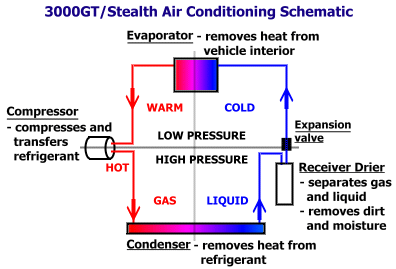
| Because of Federal laws, the potential for refrigerant to deplete the ozone layer 10 to 30 miles above the earth's surface, and the danger of exposing skin to very cold evaporating refrigerant, special precautions must always be used when handling the refrigerant in the air conditioning system. Deliberate venting of CFC-12 (also known as R-12, freon-12, or the trade name Freon) to the atmosphere has been prohibited since 1992 and release of HFC-134a (also called R-134a) has been prohibited since 1995. HFC-134a has been in use in USA cars since the 1994 model year. Unless you are certified to perform this type of work and have the necessary equipment, do not attempt any repair procedure that might allow freon to be released. If there is refrigerant in the system, have a certified shop remove the freon for you before you start this work. You should get a credit from them toward recharging your system. Do not release the refrigerant into the atmosphere! |

| 1992 (starting 9201.01) 3000GT/Stealth AC O-Rings | ||||||
|---|---|---|---|---|---|---|
| Part No. | Size | Location | ||||
| MB946449 | 5/16" | Sensing line from expansion valve to suction line | ||||
| MB946604 | 3/8" | Line at condenser to receiver drier Line at receiver drier from condenser Line at receiver drier to expansion valve Line at expansion valve from receiver drier Intermediate connection of line between receiver drier and expansion valve |
||||
| none | 1/2" | Pressure switch on receiver drier | ||||
| MB946605 | 9/16" | Discharge line at compressor Discharge line at condenser from compressor Intermediate connection of discharge line between compressor and condenser Line at expansion valve to evaporator |
||||
| MB946607 | 3/4" | Suction line at compressor Suction line at the evaporator |
||||
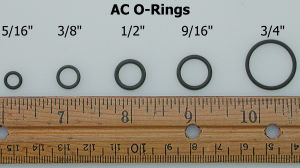
|
If you are looking for remanufactured AC components, including the compressor assembly, then consider contacting Hancock Industries (now Hodyon Intelligent Solutions) located in Abilene, Texas (1-800-289-8282). I purchased a reman'ed FX105VS compressor with clutch from them for $289.59 plus core charge and a receiver drier for $29.49 (Spring 2002). In May 2007, I bought an aftermarket receiver drier (also called an accumulator or filter/drier) for my car from Hodyon for $14.29 (their part number is 04-4931A). Discount dealers such Norco Mitsubishi wanted about $78 for it (probably a very fair price compared to what many of your local dealers want). Hoydon did not carry the expansion valve. These prices are excellent compared to the quotes I received from many local sources. I contacted Hancock Industries using the 800 number above. The sale representatives are very knowledgeable about the parts I needed plus courteous and professional. In 2002, the remanufactured compressor and receiver drier were at my house in less than 48 hours. Shipping charges were less than $11. I also purchased an $8 UPS return service label from them to make it easy to send Hancock Industries my old compressor and get my $100 core charge refunded. In 2007, again the receiver drier was at my house in less than 48 hours for a shipping charge of $10.55 (total for the receiver drier was $24.84, about a third of what the discount Mitsubishi dealers want).
Another source for AC components for our cars is http://www.discountcompressor.com/ (reman compressor with clutch for $315, no core charge; accumulator/drier for $45; expansion device $45; June 2007). |
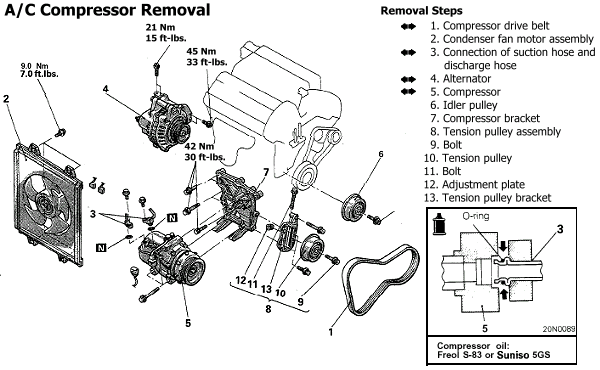
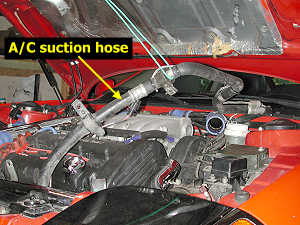
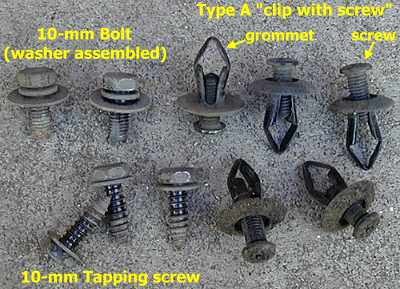
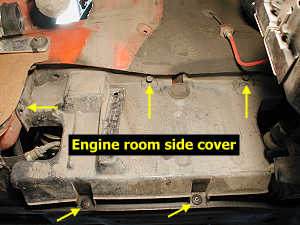
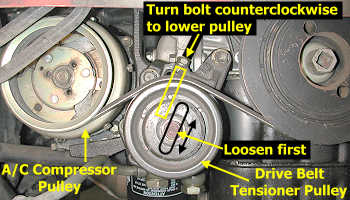
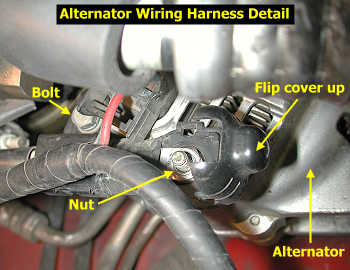
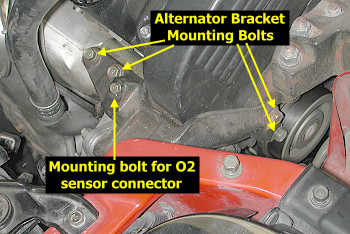
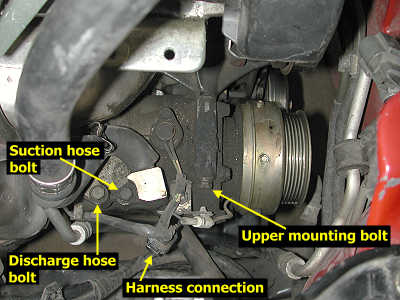
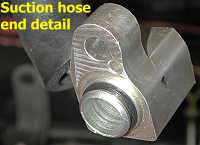
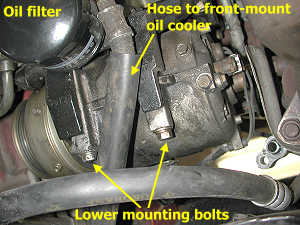
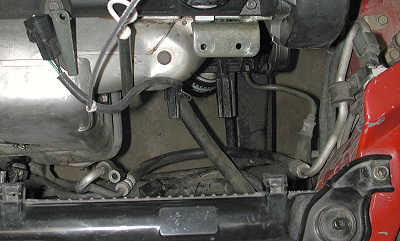
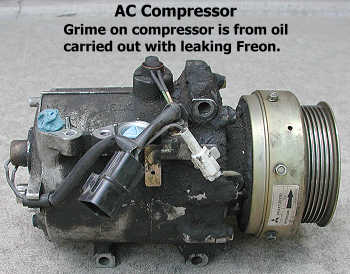
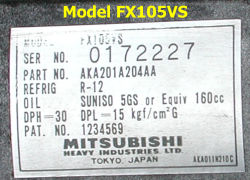
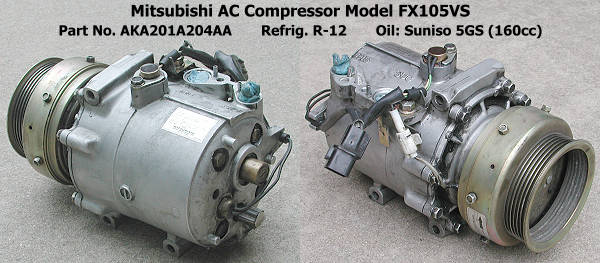
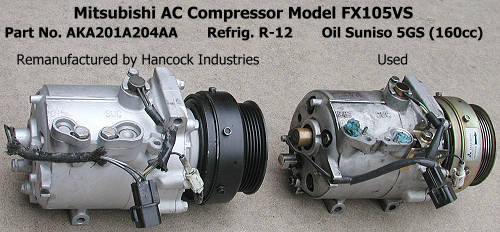
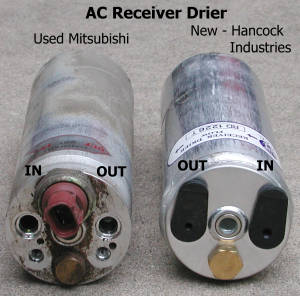
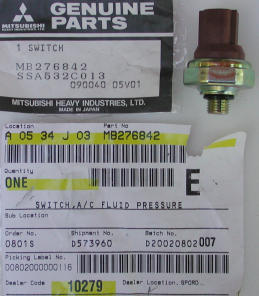
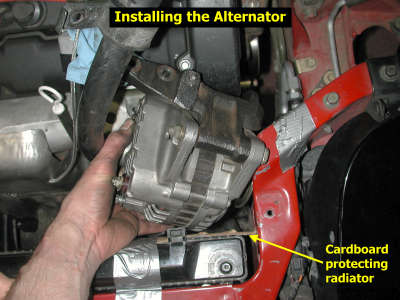
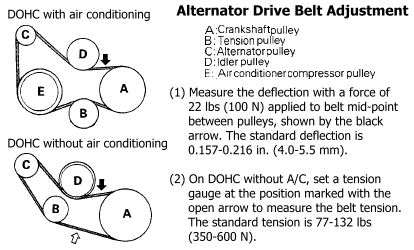
| Condenser: | 8.0 cc | (0.5 cu.in.; 0.27 oz.) |
| Evaporator: | 72.0 cc | (4.4 cu.in.; 2.43 oz.) |
| Piping: | 9.6 cc | (0.6 cu.in.; 0.32 oz.) |
| Receiver drier: | 6.4 cc | (0.4 cu.in.; 0.22 oz.) |
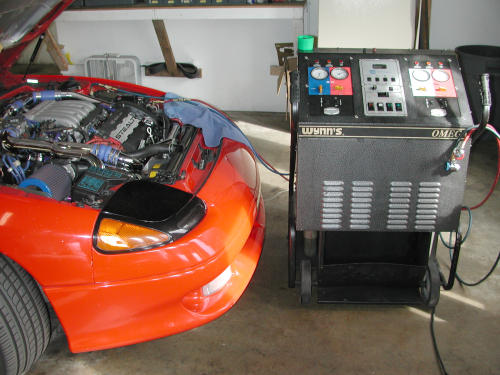
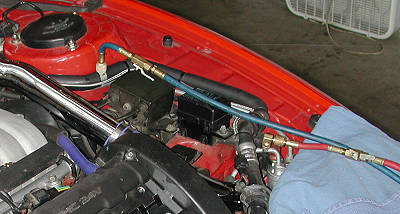
| Back | Home | Forward |